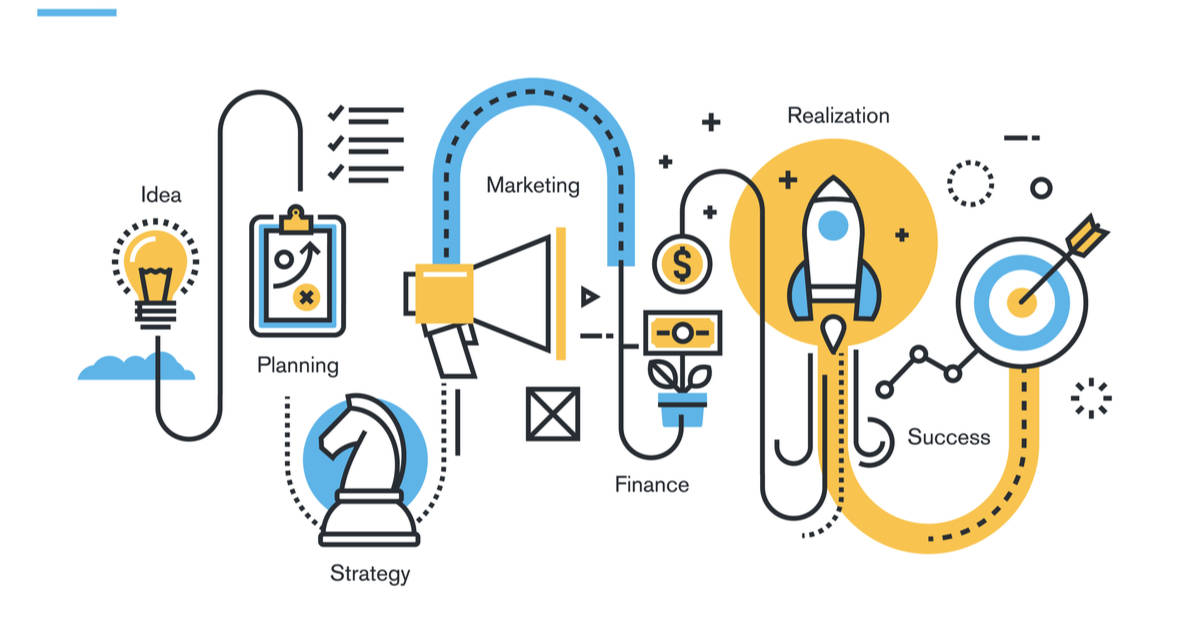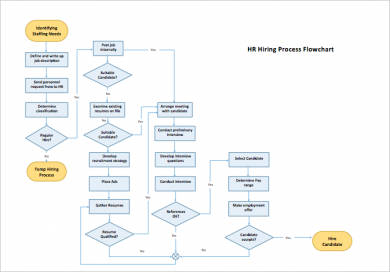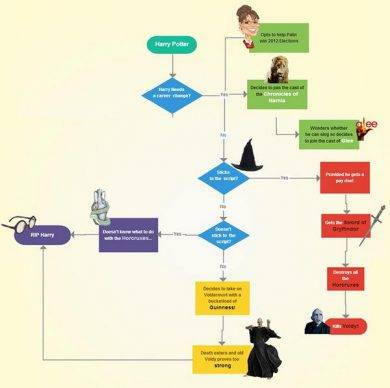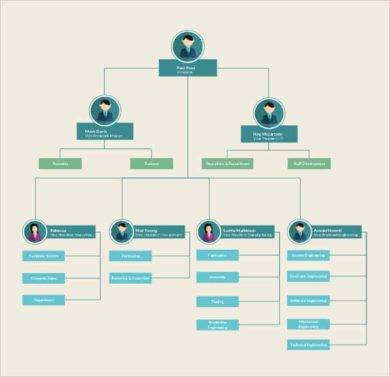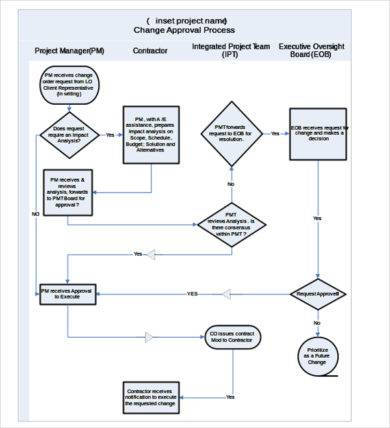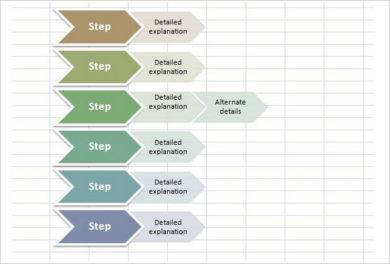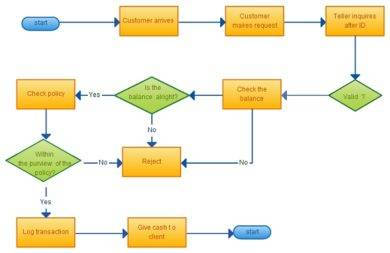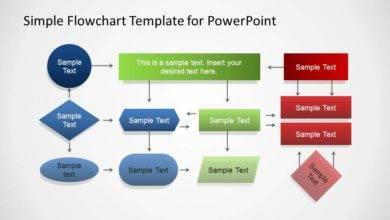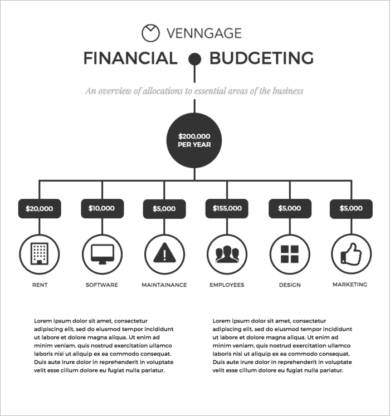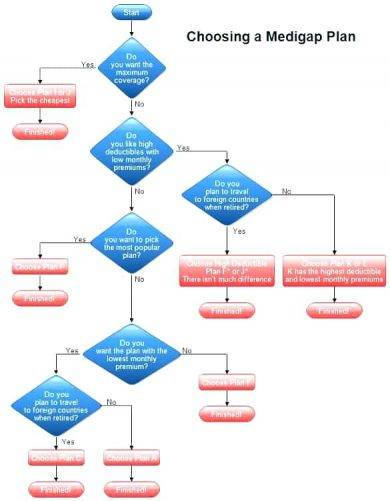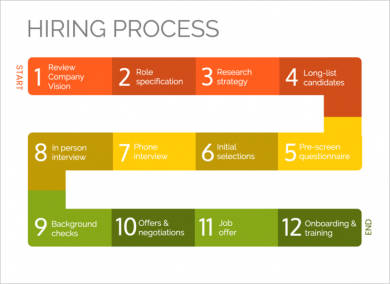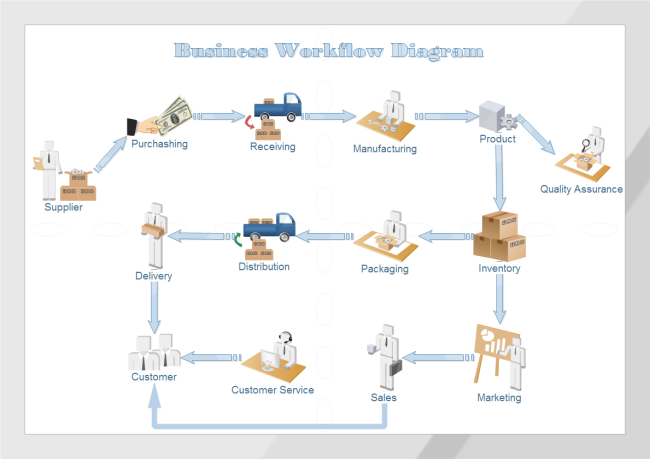11+ Workflow Chart Examples to Download
Managing a business is similar to operating a gigantic machinery. You need to understand its parts, even the smallest ones, especially the smallest ones, so that you can understand and commit to your memory the way that it works. You may also see marketing flow chart examples.
Every turn and creak should be familiar to you until the machine—until your business—and you become coordinated. By doing so, you will have the ability to recognize even the tiniest malfunction and answer to it when you need to. You may also like flow chart examples.
However, in complex corporate settings that involve big departments and procedures, it often becomes too difficult to grasp every movement that every part of the business makes. This is where visualization comes in. Visualizing the process by which your business works can make understanding it easier since you are looking at it as a whole picture, but with the details still visible. You may also check out process flowchart examples.
Work Flowchart Example

HR Hiring Process Flow Chart
Since the process is more transparent, studying, analyzing, and understanding it becomes painless. There will be no need for lengthy documents and records for every department and work station in your organization or company since it will all be conceptualized in one page. You may also like management flow chart examples.
What is a Workflow Chart?
A workflow chart is the most popular visualization diagram. It boasts of simplicity without jeopardizing its ability to effectively sketch and represent the work process of an organization. It utilizes symbols or illustrations to depict the steps needed to be taken in the process, and to recognize the people who are assigned to the tasks in each step. Plainly stated, a workflow chart is a graphic overview of the business processes. You might be interested in flow chart examples & samples.
It is simply a tool that a lot of management personalities use to be able to look at their business processes through a different perspective. Since these charts allow its user to look at the system from top to bottom, they can identify three important things: the weaknesses of the procedures, the probable flaws, and the areas for improvement. You may also see business flow chart examples.
Recognizing these things before they pose a serious issue to the whole organization is the most effective way of managing complications and keeping them from getting out of control.
This outline is also helpful in making the assigned workforce understand the task needed to be done and their specific roles in realizing it.
By having a visual representation as a guide, an entire team’s efforts and toil can be harmonized with one another which can only lead to unity even between different departments. With a team of like-minded and goal-centered people such as this, a business’s goal can be reached with more accuracy and direction. You may also check out project flow chart examples.
Movie Flow Chart Design Example
Basic Workflow Chart Example
The Names Behind the Workflow Chart
In 1921, the word workflow was first used in a railway engineering journal.
The name is credited to Frederick Winslow Taylor, who was a leading proponent of what is now called the scientific management, and Henry Gantt, a mechanical engineer and managing consultant back in the day. These two are considered the founding fathers of the workflow chart. They were among the first people who created, studied, and standardized the first rational organization of labor for the manufacturing company they worked for. You may also see basic flow chart examples.
As technology advanced and mankind’s workplace became more sophisticated with the copier and the typewriter added along with the other essential office materials, the knowledge of the workflow system became more developed, and the concept was more widely used. You may also like flow chart examples in PDF.
As time went by, every existing and strongly founded company wanted to expand globally and be competitive in the world market. Since workflow charts offer holistic quality management, different areas of business started utilizing the concept for their organizations. Total quality management efforts were accomplished with the use of the workflow chart which is why, 97 years later, it is still widely used in varying fields. You may also check out flowchart examples for students.
When Can You Use a Workflow Chart?
It is not a secret that the idea for the diagram sprung up from two legends from the manufacturing industry. But that fact did not stop the rest of the world from adapting it for their own field. You may also see nursing flowchart examples.
Here are the other business and management areas where a workflow chart has also proven itself useful:
1. Medical Field
A hospital can also make use of a workflow chart to define and structure the process that needs to be undertaken for, say, emergency patients visits.
2. Military Field
An area where a rigorous system constantly needs to be observed, it does not come as a shock that the military field will also use the workflow chart, especially in their deployment procedures. You may also like recruitment flow chart examples.
3. Finance
This field has one of the most complex systems that makes the workflow chart all the more useful to them. Payment processes, collections, and purchase orders, this diagram can make documentation more organized. You may also check out sales flow chart examples.
4. Education
A simple and common example of the use of the workflow diagram to universities and schools is the illustration that shows the enrollment process that would-be students can follow.
Workflow Sample Chart Template
Free Flow Chart Designs
Steps in Making a Workflow Chart
1. Determine the purpose of your workflow chart.
Since workflow charts are useful for different purposes in one field, knowing what exact goal you want it to serve can help you narrow down your priorities and design your chart to make it more aggressive toward your motive. Knowing the purpose of your general chart will also help you recognize the proper information that needs to be provided on it.
Also, you need to determine beforehand the audience you are creating the basic chart for. If it is for employees, make sure that it is extensive enough to guide them in their tasks, but not too much that you are already introducing information that they will not need.
The same rule goes for clients. If your chart seeks to explain to a client how your process works, make sure that the data you include will not disclose any sensitive information about your company and its proceedings. Curating your workflow chart exactly how you want it is an important element that can constitute to its success. You may also see event flow chart examples.
2. Gather relevant data that will be useful to your chart.
Even if you are the owner of the business, there is a big chance that you still don’t know everything about it. You will need the knowledge of the other members of your organization who are experts in their departments. Use their knowledge along with yours to make sure that your chart is well-equipped and well-informed. You may also like organizational chart examples.
3. Design your workflow chart.
Start by creating a rough sketch or a general overview of the recurring steps in your business. Once you have accomplished this, proceed with the details. This is where you can use the data you have gathered from your associates. Your rough sketch will then start looking like a more definitive plan once you have incorporated it with more specifics. You may also check out flowchart examples.
In doing so, make sure that your chart’s design is still in line with your purpose for creating it. Discuss and elaborate each task in every step, and the people who will be in charge of it.
4. Analyze and improve.
Your flowchart is not going to be automatically flawless the first time you make it. Once you are satisfied with the workflow chart you have created, examine it for parts you can polish. The process of creating a workflow chart doesn’t end after the material is finished. In fact, it’s only the beginning of the first part. The most vital step is analyzing and improving it. You might be interested in process flow chart examples.
Since the needs of your business grow, the demands become more severe, and the number of people you need for work to be done increases, your workflow chart will have to expand and change to accommodate all these constant alterations. It is best to constantly keep a watchful eye for the needs of your organization so you can redesign your simple chart to cater to your fresh demands.
Bank Teller Workflow Chart Example
PowerPoint Flow Chart Example
Types of Workflow Diagrams
1. ANSI Flowchart
The ANSI is the first workflow chart to be standardized. It uses common language to describe complex steps involved in the process. It also uses symbols from the American National Standards Institute. You may also see organizational chart examples.
2. UML Activity
The UML utilizes the Unified Modeling Language to offer a graphic representation of the steps in an ordered process.
3. BPMN
The Business Processing Modeling Notation’s flowchart technique is similar to that of the UML. It focuses on internal processes rather than output, and is a common language between technical and business users.
4. Swimlane
This type of workflow chart works best for multi-departmental processes. It is characterized by its division of the different units in an organization. By doing so, the swimlane chart can highlight the interaction between these divisions which can make recognizing inefficiencies easier. You may also like Gantt chart templates & examples.
5. SIPOC
Supplier-Input-Process-Output-Customer, is most effective if you are trying to create a visualization of who creates the data, who receives it, and what the process involved is.
Financial Flow Chart Example
Workflow Diagram Guide
Common Symbols and Shapes Used in Workflows
As aforementioned, workflow charts utilize shapes and figures to depict the process involved in managing the business or the organization. Here are the most common symbols utilized:
- Oval. Refers to the starting and ending points in the process.
- Rectangle. Indicates instructions or actions needed to be taken to keep the process moving.
- Diamond. Signals a point in the process where a decision needs to be made. It is usually followed by both a yes and a no, choices that the team must choose from to continue with the process. You may also see wedding chart examples.
- Circle. This symbol is used to connect the processes together; often between another flowchart or page.
- Arrow. Points toward the direction of the flow that the process must follow.
Color Coded Flow Chart Example
Business Workflow Diagram
Important Points to Remember about Flowcharts
1. Drawing or illustrating the flow chart the right way is not the main priority. As long as it leads the team through the process with no questions and reticence, the flow chart will be considered effective. You may also see free organizational chart examples.
2. The key people who will be directly influenced by a flow chart, or those who will execute the process it contains should be a part of the process of creating it.
3. There is no need for assigning professionals or technical experts to design and create the flowchart. It will be more effective if it is created by the very people who will make use of it, since they can design it in a way that is more comprehensible to them. You may also like Pareto chart examples.
4. If creating a flowchart is a daunting task for you, we have attached a variety of templates and samples you can use a guide to help you personalize yours.
Workflow charts all play the same role. They lead a team toward a common goal and a process that can benefit the organization logistically. They make even the biggest corporations manageable, and the most complex work processes it needs less laborious. You may also check out control chart examples.


